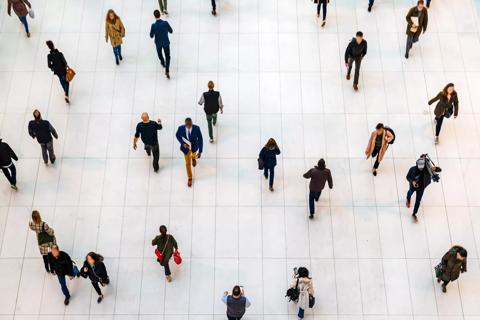Advertisement
Here’s how to weigh the risk of certain activities if you're not vaccinated

As states and businesses open back up and life tries to carry on, it can be tricky to determine what activities and events are safe and what’s worth skipping if you’re not vaccinated. But Aaron Hamilton, MD, says being aware of (and following!) the proper guidelines and safety measures can help you determine the risk level associated with a particular activity. There are actions we can all take that might not look or feel normal, but they can help protect us as we all learn to live in this new world.
Advertisement
Cleveland Clinic is a non-profit academic medical center. Advertising on our site helps support our mission. We do not endorse non-Cleveland Clinic products or services. Policy
When considering an activity or event, Dr. Hamilton says that it comes down to three main factors: time, space and people.
Carefully weigh how much time you’ll be spending at the activity. Less time means limiting your risk of exposure to the virus.
Is the activity or event taking place outside or indoors? If it’s indoors, consider how enclosed or ventilated the space is. We know that right now, it’s safer to be outside than inside if you’re not fully vaccinated (but that doesn’t mean the risk of catching the virus outdoors is zero). You should also consider if the space has a limit on how many people can be there at one time. This will clue you in as to how easy or difficult it will be to maintain physical distance from others.
Consider if the people you’ll be interacting with (especially if they’re outside of your direct household and aren’t vaccinated) are following and respecting safety guidelines, which include:
As for fully vaccinated people, the CDC says they can resume activities without wearing a mask or physically distancing, except where required by federal, state, local, tribal, or territorial laws, rules, and regulations, including local business and workplace guidance. Fully vaccinated means that it’s been at least two weeks since you received a one-dose vaccine or the last dose of a two-dose vaccine. If you don’t meet these requirements, you’ll still need to take the proper safety precautions.
“When thinking about the risk of an activity, I like to think of it as a spectrum,” explains Dr. Hamilton. “It’s less about safe vs. not safe, and more about layers of risk. Everybody will have to do a risk assessment for themselves and determine where they’re comfortable and what safety guidelines they’re going to follow.”
On one end of the spectrum, if you’re not vaccinated, the absolute safest thing to do is to stay at home with your family. On the other end of the spectrum would be large, indoor gatherings with lots of unknowns.
Advertisement
Certain activities will always carry a much higher risk than others. A large, indoor concert is going to be more dangerous than an outdoor picnic with a couple of friends who are following safety measures. How often you choose to partake in risker activities and events matters as well.
You’ll need to ask yourself: What am I not comfortable with? Who am I interacting with? How long will I be there? What steps will I take to keep myself safe?
The degree of safety depends on the degree to which you comply with the guidelines.
“It’s really about assessing the risk of an activity and making a decision and if you decide to participate, you exhibit the behaviors that we know help protect everyone – like social distancing, washing your hands, wearing a face mask and that sort of thing,” says Dr. Hamilton.
If you’re not vaccinated, here are nine popular activities and events and what to consider when it comes to weighing the risk. (Important caveat: Realize all of these risk levels are simply estimates and your own personal risk will sometimes depend on factors that aren’t always under your control or obvious to you at the moment.)
Advertisement
When it comes to attending activities and events, the key is to take the same COVID-19 precautions you would anywhere else. If you can’t take those precautions, it’s probably best to skip it and be safe, says Dr. Hamilton.
Advertisement
Learn more about our editorial process.
Advertisement

The medication is ineffective and — in the case of animal ivermectin — potentially dangerous

Updated vaccinations are recommended to better protect against the evolving virus

Enteroviruses are often to blame for summer colds, leading to a runny nose, sore throat and digestive symptoms

Redness, swelling, itching and rash can happen when your body’s immune system reacts to the vaccine injection

Studies suggest 1 in 5 people infected with the coronavirus never develop symptoms

An increased risk of blood clots can last for nearly a year after a COVID-19 diagnosis

COVID-19 may be associated with tinnitus, but research is still ongoing

The short answer: It’s complicated, but the basic care precautions still prevail, like washing your hands and isolating if you’re sick

Focus on your body’s metabolic set point by eating healthy foods, making exercise a part of your routine and reducing stress

PFAS chemicals may make life easier — but they aren’t always so easy on the human body

While there’s little risk in trying this hair care treatment, there isn’t much science to back up the claims